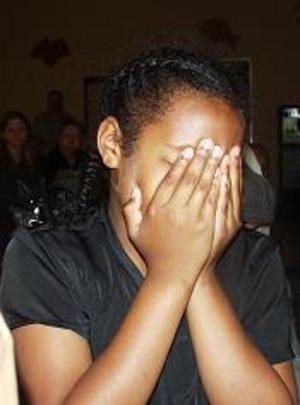What is common with the following acronyms: BPD, OCD, ADD, ODD, SPD, HPD, NPD, APD, PPD ? These are 3-letter acronyms and contain the “D” in the end. “D” stands for the disorders categorized in the Diagnostic and Statistical Manual of Mental Disorders (DSM-IV).
DSM-IV is like a bible to mental health professionals. Clinicians identify presenting symptoms, its duration and classify these symptoms to the disorder that best reflects it.
There are over 200 mental illnesses in the handbook. Many advocate groups are pushing another new disorder in the next publication in 2012. It covers an overlooked phenomenon existing widely in family situations involving adoptions, foster care, child welfare, stepfamilies and caregivers. It pertains exactly to children who has witnessed trauma or has lived through one. It is called Developmental Trauma Disorder or DTD.
The 2008 released-movie of Sylvester Stallone called “Rambo” depicts military dictatorship and oppression to Burmese natives. The movie is action-filled with children witnessing the horrors of wars in Burma now known as Myanmar. Children see their parents physically tortured, village women and sisters raped, brothers forcibly taken from their families to serve as soldiers. Children witness horrible violence in their midst.
Millions of children in America suffer extreme trauma in varying forms: sexual abuse, molestation, assault, physical abuse and neglect, medical trauma and accidents, natural disaster such as hurricanes and floods, community/school violence and terrorism. However, Dr. Kohl, in his White Paper on DTD, reveals the greatest chunk of the maltreatment are from within their families.
Many adoptive parents, foster care parents, stepparents and child welfare workers aim to provide some degree of stability to help victims heal. Their efforts seem successful for a time. These caregivers awaken to the shocking truth one day. The child is displaying a wide array of emotions and behaviors that are inconsistent and disturbing. It includes depressive episodes, attention difficulties, academic problems, nightmares, anxieties and physical symptoms such as sleeping and eating disorders and unexplainable pains and aches. Their timid child is now into risky behaviors.
The emotional demands to the family become overwhelming and unbearable. The caregivers sort out possible child-rearing mistakes. They feel guilty coming to the lives of these children quite late to prevent trauma. The transformation in their child is unpredictable. Parents feel isolated.
Mark Moran noted in Psychiatric News the economic costs of this disorder. About $24 billion government funds are spent in medical care, therapy, child welfare, law enforcement and judicial system. The indirect costs translate to $69 billion in special education, juvenile delinquencies and criminality.
Conclusion
Trauma can affect the development of the brains of a child. New studies indicate that complex traumas necessitate a new category in the DSM-V. Developmental Trauma Disorder, currently classified under Post Traumatic Stress Disorder (PTSD), will prevent misdiagnosis and improper treatment plans. Children suffering from DTD turn out to be initially victims and eventually perpetuators. Caregivers suffer silently. Emotionally traumatized children threaten families. Dysfunctional families threaten societies. America needs to take bold steps for these children.
Sources:
Tori DeAngelis, “A New Diagnosis for Childhood Trauma?”, American Psychological Association
Mark Moran, “Development Trauma Merits DSM Diagnosis, Experts Say”, Psychiatric News , Pn.psychiatriconline.org
Susan Campbell, Trauma Disorders Typically Overlooked in At-Risk Kids, Courant.com
The National Child Traumatic Stress Network (NCTSN), NCTSN.org
Bessel A. van der Kolk, MD, “Development Trauma Disorder”, White paper
